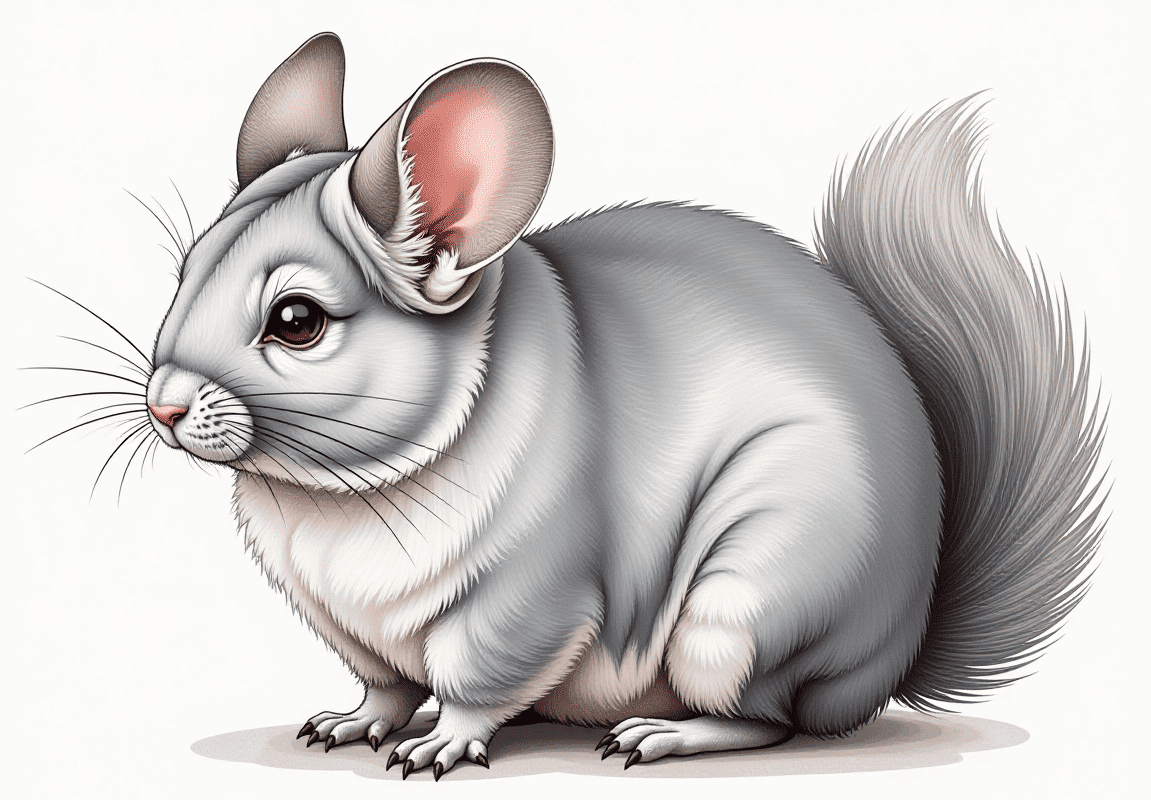Mental Stimulation for Chinchillas: Enrichment Ideas They’ll Love
Mental Stimulation for Chinchillas: Enrichment Ideas They’ll Love
Let’s face it—chinchillas get bored, and when they do, it’s obvious. While they might appear to be quiet little fluffballs, chinchillas are actually alert, curious, and full of energy. The issue is that many of them live in environments that lack variety and challenge.That’s where mental stimulation for chinchillas: enrichment ideas they’ll love really come into play. Without engaging activities, you might notice your chinchilla chewing on cage bars, over-grooming, or just sitting around looking uninterested. These behaviors aren’t just quirks—they’re signs that your chinchilla isn’t getting the mental engagement they need to stay happy and healthy.
Agitate: Boredom Isn’t Just a Mood—It’s a Risk
Lack of mental stimulation can lead to more than just a grumpy chinchilla. Studies in small mammal behavior (like those shared by the Laboratory Animal Science Association) show that animals without enough enrichment are more prone to stress, anxiety, and even health problems due to a lack of movement or destructive chewing behaviors.
In chinchillas, this can look like:
- Excessive gnawing on metal cage parts
- Obsessive digging or pacing
- Refusing to eat or becoming overly aggressive
This isn’t just “bad behavior”—it’s your chinchilla trying to tell you they’re understimulated.
Solution: Mental Stimulation for Chinchillas—Enrichment Ideas They’ll Love
Let’s fix that with enrichment ideas that work with your chinchilla’s natural instincts. Here’s how to add variety, challenge, and fun into their daily life.
1. Why Mental Stimulation Is Essential
Chinchillas are prey animals, which means their brains are wired for constant alertness and curiosity. In the wild, they’d spend hours climbing rocks, squeezing into hiding spots, and foraging for food.
When we bring them into our homes, we take away a lot of that natural stimulation—unless we find ways to reintroduce it.
Mental enrichment helps:
- Prevent stress and anxiety
- Promote healthy chewing and foraging
- Strengthen your bond through interaction
2. Types of Enrichment That Work
Physical Enrichment
Give them opportunities to move! Use platforms, ramps, and tunnels in the cage. Outside-the-cage playtime in a secure chinchilla-proof area is even better—just watch for wires and furniture they can chew.
Sensory Enrichment
Introduce new textures and smells. Try mixing up the placement of hay, rotating toys, or putting treats in hay piles to create small “search missions.”
Social Enrichment
Yes, chinchillas can form bonds. Talk to them. Let them explore you. If you’re considering a second chinchilla, be cautious and slow with introductions—but it can be rewarding.
Cognitive Enrichment
Challenge your chinchilla with:
- Puzzle feeders
- Simple obstacle courses made from cardboard boxes
- Hiding treats in safe chewable items (like paper towel rolls)
3. DIY Enrichment Ideas (Low-Cost, High-Fun)

You don’t need to spend a fortune. Try:
- Cardboard maze: Connect toilet paper tubes and cardboard boxes into a small adventure zone.
- Treat burrito: Wrap a treat inside tissue paper and twist it shut for a chew-and-discover challenge.
- Hay puzzles: Stuff hay into paper egg cartons and punch a few holes for a fun digging experience.
4. Store-Bought Toys That Actually Work

Some toys are worth the investment—just keep it natural. Look for:
- Apple wood chew sticks
- Timothy hay balls
- Hanging wooden blocks (no plastic chains)
Avoid anything with glue, plastic, or dyes. Your chinchilla will chew it.
5. Rotate Toys Weekly
Don’t let novelty wear off. Rotate toys every 7–10 days and shift around platforms or ramps monthly. This keeps their environment interesting without overwhelming them.
6. How Much Playtime Is Enough?

Aim for 30–60 minutes of out-of-cage playtime daily, if possible. In-cage activities matter too, but that free-roam time (in a safe space) makes a huge difference.
If your schedule doesn’t allow for daily sessions, focus on high-quality cage enrichment with puzzle toys and hidden treats.
7. What Not to Do (Mistakes to Avoid)
- Using plastic toys (they’re unsafe if chewed)
- Leaving the same toys for months without change
- Overloading the cage all at once—new items should be introduced gradually
8. Customize for Personality
Just like people, chinchillas have personalities. Some are bold and will leap into new challenges. Others are cautious and need time. Pay attention to what your chinchilla enjoys and adjust your enrichment efforts to match.
Absolutely, you can replace the “Wrap-Up” section with a more traditional Conclusion section while still reinforcing the key takeaway and reusing the blog title naturally.
Here’s a revised version of the Conclusion section:
Conclusion
Chinchillas aren’t just adorable—they’re intelligent and curious animals that crave interaction and variety. Without enough mental stimulation, they can become bored, stressed, and even sick over time. But with just a bit of creativity, you can give your chinchilla a more engaging and enriching life.
From puzzle feeders to cardboard mazes and rotating chew toys, small changes in their environment can make a big difference. The key is to keep things interesting, observe what your chinchilla enjoys, and tailor activities to match their personality.
In short, when it comes to mental stimulation for chinchillas: enrichment ideas they’ll love, it’s all about combining fun with function—and creating a habitat where your chinchilla can thrive.
